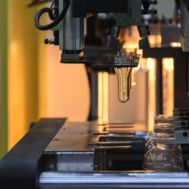
Industries

Applications

Cookie Consent
Cookies are used for statistical purposes and to improve the site.
Cookies will be used after you click "Accept" or if you continue using Dynisco.com
To find out more please review our Privacy Policy.
In its seven decades of operation Dynisco has accumulated almost 100,000 different configurations. So how do I choose the right one for me? A sensor is typically defined through the following specifications:
.jpg)
Besides these points a lot more variables come into play but to start it simple let’s have a look on these four at this point.
Pressure Range
Usually, the pressure inside a plastics processing machine can be estimated well enough to determine a good pressure range for a sensor. The typical working pressure should be within 20%-80% of the sensors pressure range in order to have a good balance between accuracy and lifetime.
Process Connection
.jpg)
For threaded connections in plastics processing a standard has developed over time which is the ½”-20UNF thread with a conical sealing face. There might be situations where different thread sizes or a flange connection is required. There are numerous options available from Dynisco to satisfy customer needs in regard to the process connection.
Electrical output
A pressure sensor is a electro-mechanical device with converts a mechanical effect (pressure deflects a thin piece of metal) into an electrical signal through a strain gauge. The strain gauge changes its resistance by following the deflection of the metal piece. In the simplest case the signal coming from the strain gauge can be used directly to feed a read-out device to display the pressure. To accommodate industry standard equipment like process control equipment Dynisco supplies sensors with different amplified output options like 4-20mA or 0-10V.
.jpg)
Capillary configuration
.jpg)
A typical pressure sensor has a liquid filled capillary which connects the process diaphragm (which is deflected by the process pressure) and the measuring diaphragm (where the strain gauge is bonded to). This capillary is necessary to create a heat barrier, as the strain gauge is not able to withstand the typical process temperatures at plastics processing. Also the electronics of the sensor need to kept away from heat sources as good as possible. To be able to find a good mounting location for the electronics can countless combinations of rigid stem and flexible connection lengths are available.
Just download a data sheet of one of our main product lines (e.g. PT or ECHO series) and you will find the above discussed specifications. As I already mentioned there is sometimes a lot more to consider, for example:
But with the above mentioned points you will be able to narrow down your selection significantly.

38 Forge Parkway,
Franklin MA 02038
+1 508 541 9400
Pfaffenstr. 21, 74078,
Heilbronn, Germany
+49 7131 297 0
Lot 3615, Jalan SM 6/8
32040 Seri Manjung, Perak, Malaysia
+605 6884014